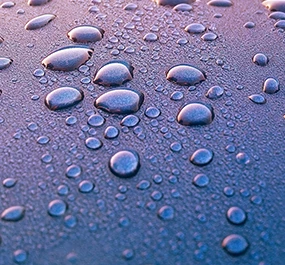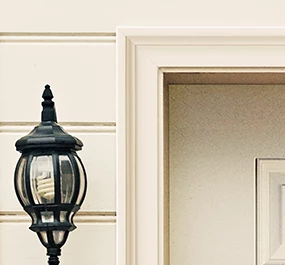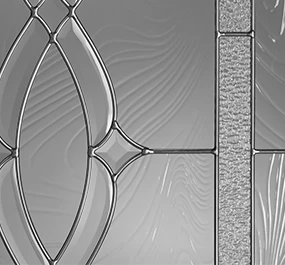Everyone involved- manufacturers, distributors, and customers- appreciate a quality product that performs well enough to fade into the background. No one wants dissatisfied customers, especially at the cost of warranty coverage disagreements. Proper maintenance will help prevent these conversations by maximizing fiberglass door performance over time. Read our list of do’s and don’ts for fiberglass door maintenance that distributors, installers, and customers should all know for maximum efficiency.
1. Do use a hard topcoat
Fiberglass doors require a hard, polyurethane or acrylic topcoat finish. Otherwise, in hot environments, the weatherstripping may stick to softened paint and damage the door. The door’s topcoat should be reapplied often — every two years if not exposed to direct sunlight and up to every six months if there is no overhang and a lot of direct sunlight.
2. Do protect the lock bore during installation
Before the lock and hardware are installed, protect the open lock bore- this prevents water damage inside the door in the event of it being installed on a rainy day.
3. Do take extra care to protect outswing doors.
Beware of the additional exposure to the elements that outswing doors without an overhang face — these doors will need extra protection during installation and more frequent weatherproofing.
4. Do equip homeowners.
Ultimately, the homeowner is financially responsible for what happens to the product once it reaches them. But if manufacturers and distributors don't offer education, arguments and expensive settlements can ensue even if the customer is at fault. The customer should seek out maintenance instructions, and we should make them easily accessible — online and attached to the product when possible.
5. Do keep open lines of communication.
After the sale, the best thing manufacturers can do to save everyone time, money and hassle is to keep lines of communication open. If manufacturers, distributors, and installers are accessible, owners are more likely to troubleshoot and take preventative steps before any big issue arises.
6. Don't bend to trend when it's not practical
For example, black doors are currently popular, but more prone to heat damage and less likely to age well. Be mindful of paint and stain colors generally. Particularly in hot climates or in entrances without an overhang, light colors perform better, as they are less likely to absorb damaging UV rays.
7. Don't power wash doors.
This is a popular chore, but doors with glass inserts should be hand washed; power washing can cause damage to the seal- leading to leaks and foggy glass.
Encourage customers to engage with maintenance information from Day 1. Set them up well with the correct topcoat and point them to the manufacturer’s care and maintenance instructions.
At Plastpro, we know people will be drawn to DIY projects, so we provide easily accessible maintenance instructions, approachable how-to guides and blog posts for guidance. If manufacturers aim to be go-to sources for this information, and distributors and installers point customers to our websites, these practices should go a long way to making everyone’s job easier.
Originally Published on NAHBNow:



